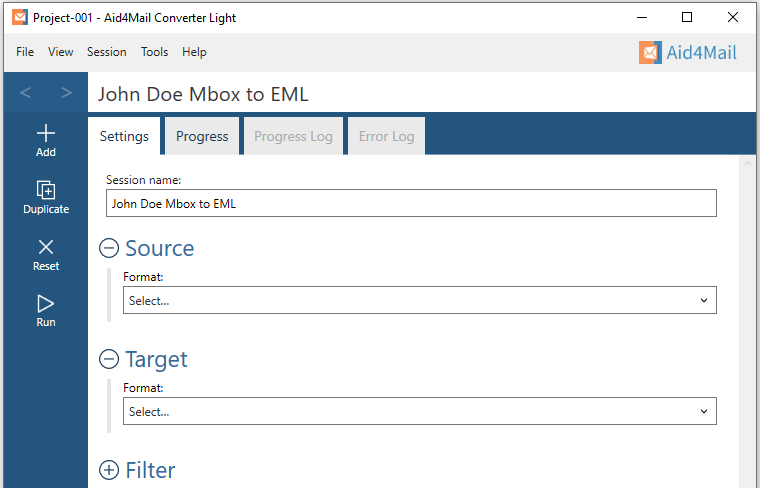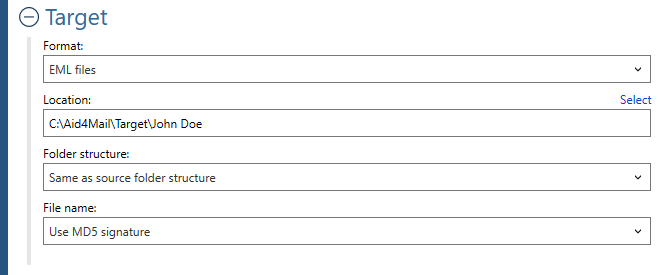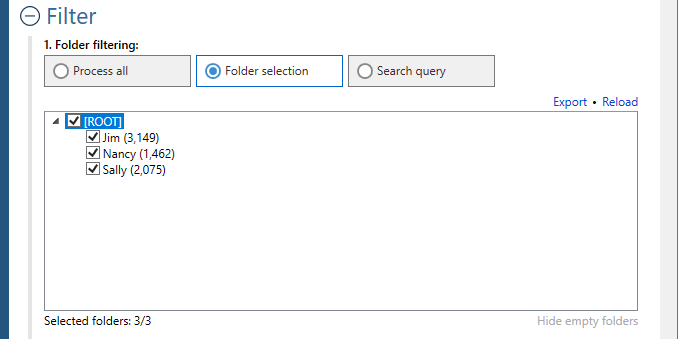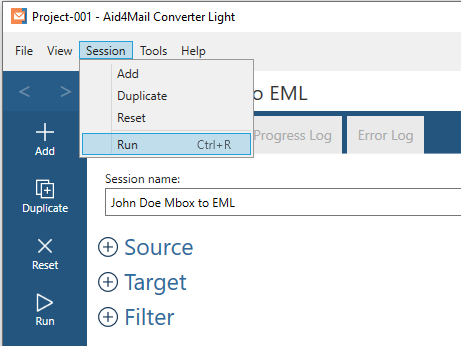Welcome to Fookes Software’s support portal
How to convert Mbox to EML (free + accurately)
Aid4Mail is the best free Mbox to EML converter tool on the market. Compared to competing tools:
- Aid4Mail is faster.
- More accurate with no data loss.
- Recovers emails from corrupted mbox files (more common than people imagine).
- Offers more control over the conversion process.
If you don’t have Aid4Mail yet, you can use the free Converter light edition to convert your Mbox files to EML files.
Mbox files are a common email storage format used by popular products like Mozilla Thunderbird, Google Takeout and Google Vault. Although the format is simple, it’s prone to data corruption. Aid4Mail is one of the rare tools that can repair the damage correctly and recover emails that competing tools miss.
Aid4Mail can convert Mbox to EML files in batch and can faithfully preserve the folder structure of the Mbox files.
Convert Mbox files to EML files for free with Aid4Mail. For any setting that’s not specifically mentioned, you can either use the default (preset) value or consult the Aid4Mail 5 User Guide for details. You can open it from Aid4Mail by pressing the F1 key.
Step 1: Open Aid4Mail’s settings

- In Aid4Mail, select the Settings tab.
- Update the Session name to so it describes for the task at hand. In this example, we will be converting John Doe’s Mbox files to EML so we’ve entered John Doe Mbox to EML as the session name.
- Below the session name there are three sections: Source, Target and Filter. Each can be displayed or hidden by selecting the +/- symbol next to the section heading. This tutorial requires them all to be displayed.
Step 2: Set Mbox files as your source

- In the Format list, select Mbox files.
- Set the Location of your Mbox files, either writing it directly in the field or by using the Select button to browse your file system. Set a single Mbox file, or a folder containing Mbox files, or a folder whose hierarchy (anywhere below it) contains Mbox files. For this example, we’ve set a folder called JohnDoe.
Step 3: Set EML files as your target

- In the Format list, select EML files.
- Specify the Location where you want your EML files to be saved. You can write directly in the field or use the Select button to browse your file system.
- Select an option for the Folder structure of the exported mail. Usually you’ll want to keep it the same as the original, so choose Same as source folder structure.
- Define your File name template. With the Converter light option, you only have the two options presented (Use MD5 signature and Use email UID value). The Converter light license does not contain all the features available with file naming. With our paid Converter license, you can fully customize the file naming template of each EML file. For example, you could have the following file naming template for each EML file: {LocalMessageDate}-{Subject}
Step 4: Set your filter (optional)

- Under Folder filtering, pick Folder selection. Your Mbox files folder structure will appear in the box below.
- Select the folders you want Aid4Mail to process. The others will be skipped.
Step 5: Run your Mbox to EML conversion

Select the Run button or Session > Run from the menu. Aid4Mail will convert your chosen Mbox files to EML files. It will automatically open the Progress tab so you can monitor what’s going on. Once finished, you will find full reports in the Progress log and, if relevant, the Error log.
That’s it!
We hope you found this tutorial helpful in showing you why Aid4Mail is the best free Mbox to EML converter on the market. As shown above, Aid4Mail can export Mbox to EML quickly, reliably and not costing you anything!
If you’re looking for further information, first take a look through the Aid4Mail 5 user guide and our knowledge base articles.
If you still have questions, don’t hesitate to contact our award-winning Helpdesk.
If you’d like to buy an Aid4Mail license, please visit the online store.
You can use the Aid4Mail Converter light edition by downloading Aid4Mail from here. Once downloaded, select the Converter light edition and run your own conversions from Mbox to EML.